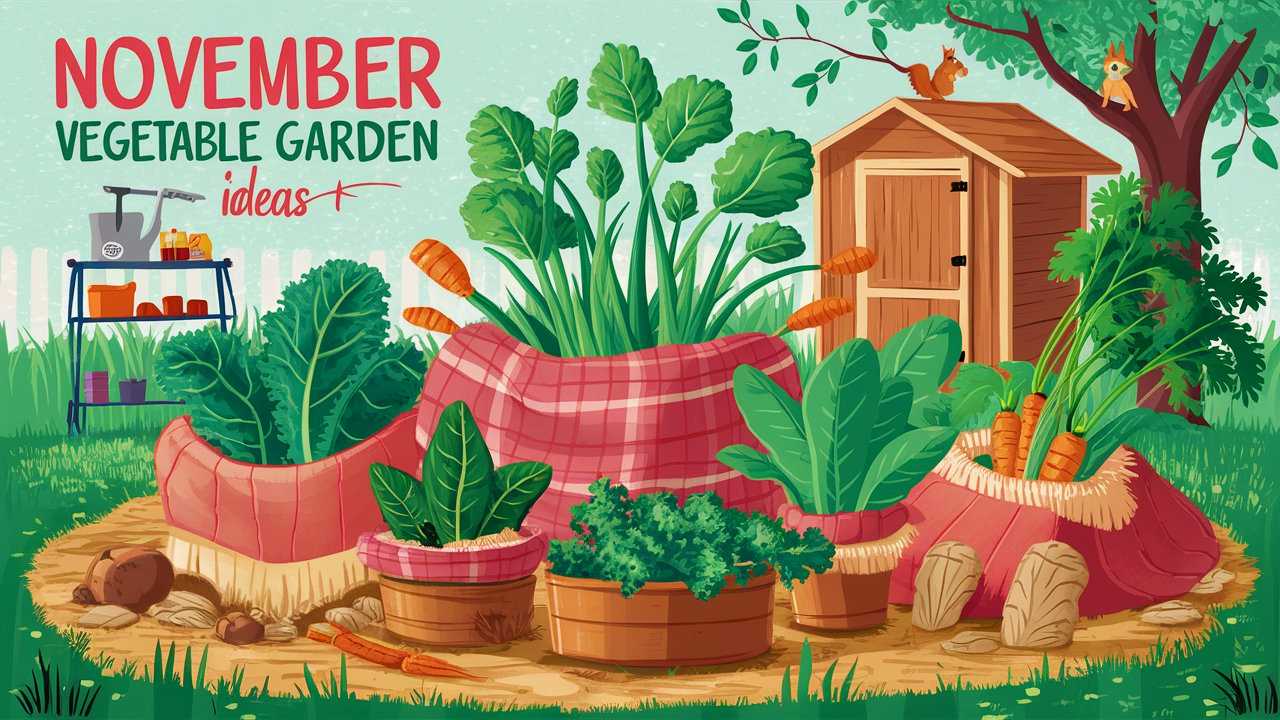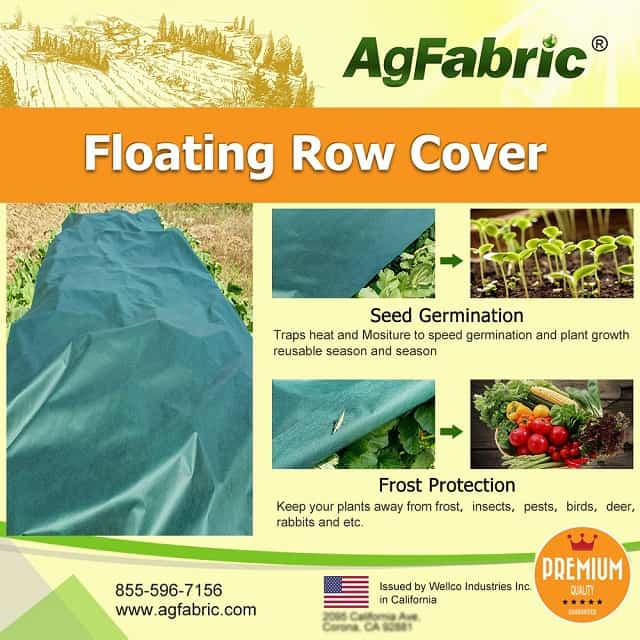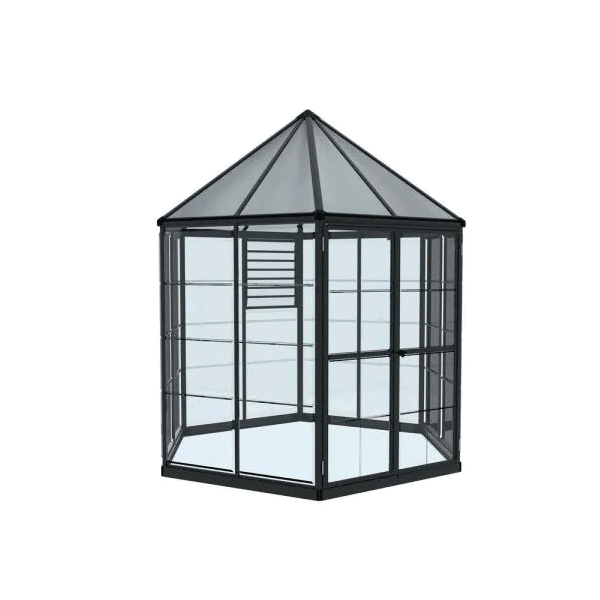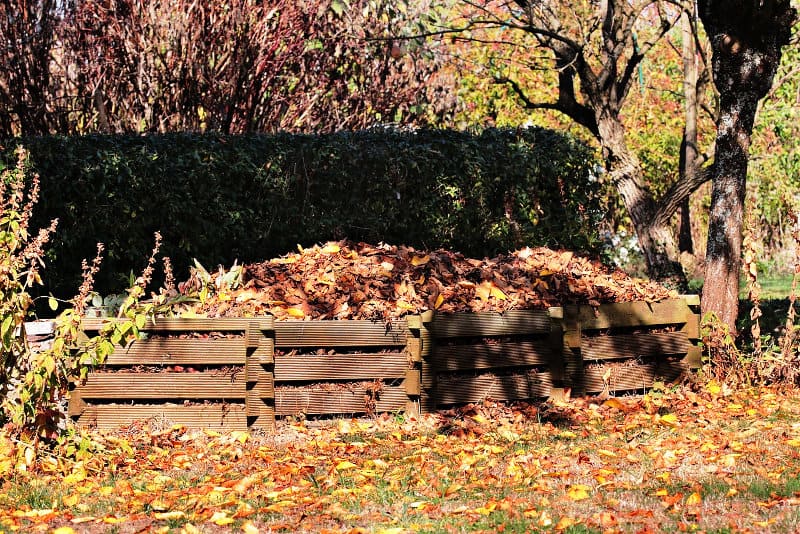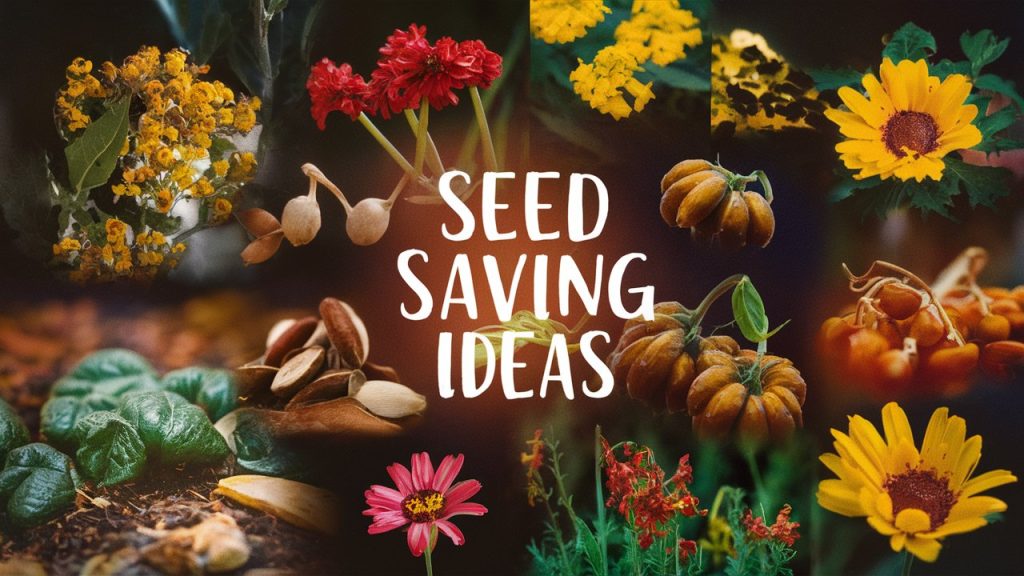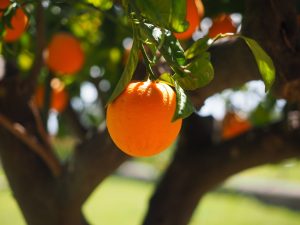As the days grow shorter and the air turns crisp, November may seem like the end of the gardening season for many. However, for those passionate about vegetables and gardening, this month brings a wealth of opportunities to prepare, plant, and plan for the months ahead.
November can be a productive time in the garden—whether you’re harvesting late-season crops, planting winter vegetables, or preparing soil for the spring. In this post, we’ll explore a myriad of November vegetable garden ideas that will help you prepare your garden for the colder months.
1. Evaluating Your Garden After Fall Harvesting
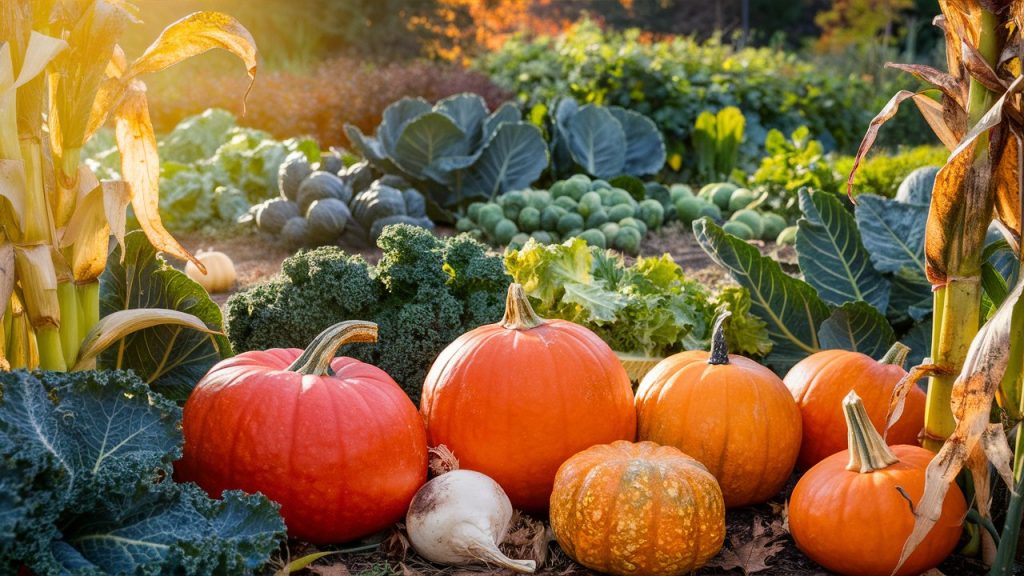
Before diving into new planting and preparations, take this time in November to assess your garden. After the fall harvest, it’s important to review what worked well and what didn’t. Evaluate the health and yield of your plants, and consider factors such as pest issues, disease, and challenges posed by the weather. Documenting this information can be incredibly beneficial as you plan for future seasons.
Key Considerations in Garden Evaluation:
Soil Health: Examine soil quality and make note of any deficiencies. Healthy soil is the foundation of a thriving vegetable garden.
Crop Rotation: Reflect on which crops were planted in which areas to ensure proper crop rotation in the next growing season.
Pest Management: Identify any pests that may have affected your crops and consider organic ways to manage them moving forward.
Microclimates: Observe shaded areas or spots that retain heat. This knowledge will aid in your future planning for planting times and crop selection.
2. Planting Cover Crops for Soil Enrichment
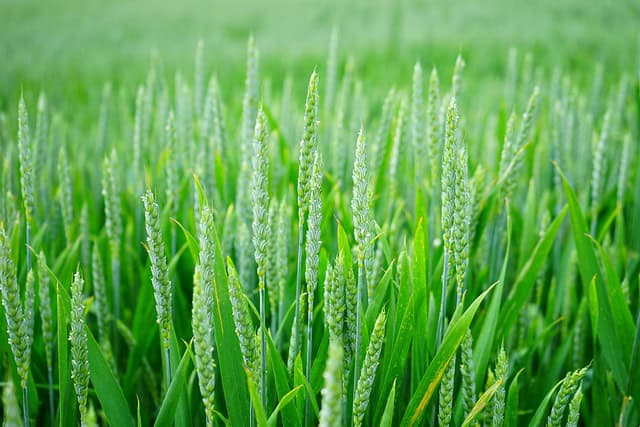
One of the best November vegetable garden ideas involves planting cover crops. Cover crops, such as clover, rye, or vetch, can significantly improve soil health over the winter months. These plants help prevent erosion, prevent nutrient leaching, and improve soil structure.
Benefits of Cover Crops:
Nitrogen Fixation: Leguminous cover crops like clover can fix nitrogen in the soil, providing a natural source of fertilizer.
Organic Matter Addition: Once tilled back into the soil, cover crops increase organic matter, enhancing soil fertility and moisture retention.
Weed Suppression: A dense cover of plants can suppress winter weeds, which may compete with your vegetables come spring.
Plant your cover crops in early November before the ground freezes for best results. Ensure you select varieties suitable for your climate to maximize their benefits.
3. Choosing Winter Vegetables for Planting
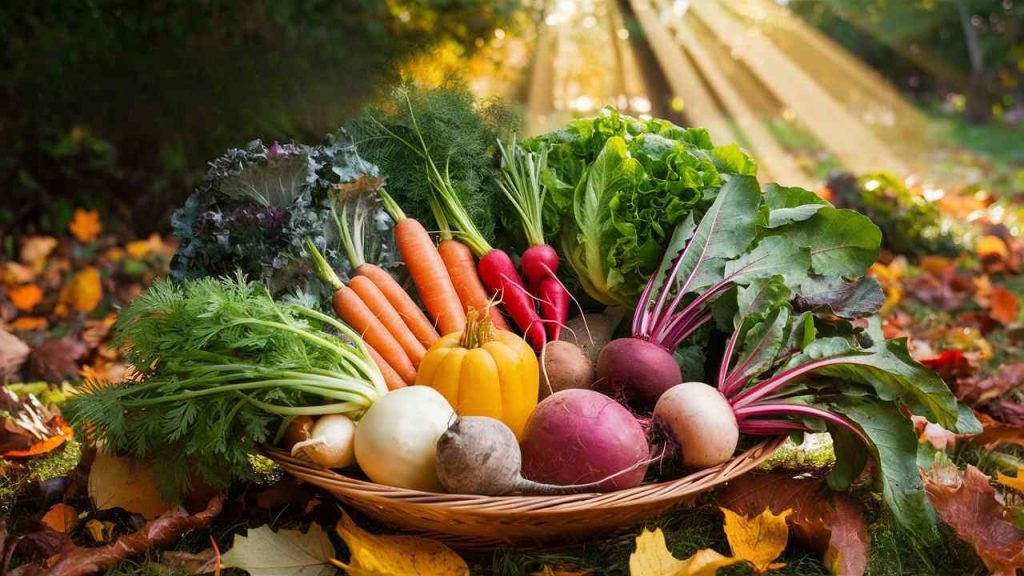
November is not just a time for preparation; it’s also an excellent month for planting certain cold-hardy vegetables. With the right care, vegetables such as kale, spinach, and garlic can thrive during the winter months.
Top Winter Vegetables to Plant:
Kale: This nutrient-dense green tolerates frost and can actually become sweeter after exposure to cold.
Spinach: Similar to kale, spinach can survive frost and continues to grow slowly throughout the winter.
Garlic: Plant garlic cloves in November for a bountiful harvest next summer. Choose hardneck varieties if you live in colder climates.
Broad Beans: In milder regions, broad beans can be sown in November for an early spring harvest.
Ensure to provide protection, such as row covers or mulch, to help these vegetables withstand harsh temperatures.
4. Extending the Growing Season with Cloches
Using cloches, or protective coverings, can significantly extend your growing season into November and even beyond. Cloches can be simple glass jars, plastic cloches, or even homemade structures that offer warmth and protection from frost.
Benefits of Using Cloches:
Temperature Regulation: Cloches trap heat during the day and insulate plants at night, creating a microenvironment conducive to growth.
Wind Protection: They protect delicate leaves from strong winds, which can desiccate plants and damage crops.
Pest Deterrence: Cloches can shield your plants from pests that are still active in cooler weather.
Strategically using cloches can keep your exposed crops thriving even as temperatures drop.
5. Winter Vegetable Garden Planning and Design
November is the perfect time for introspective garden planning. This month allows you to contemplate what crops to grow next season and how best to organize your garden layout.
Elements to Consider in Your Plan:
Succession Planting: Plan for staggered plantings to ensure a continuous harvest throughout warmer months. Consider shorter-maturing crops alongside longer-maturing varieties.
Diversity: Incorporate a variety of vegetables to reduce the risk of pests and diseases while addressing different nutritional needs.
Raised Beds and Containers: Sketch your designs while considering space-efficient options like raised beds or container gardening, which can extend planting options.
Companion Planting: Study the principles of companion planting to enhance growth and reduce pest issues. Certain vegetables thrive when grown together, which can optimize space and yield. For example, planting garlic alongside roses can deter aphids.
6. Caring for Existing Perennials and Biennials

While November might signal the end of the vegetable growing season for most annual crops, it’s also a crucial time to care for perennial vegetables and biennials still in the garden. Understanding how to manage these plants will set you up for a successful harvest in the following year.
Key Actions for Perennial and Biennial Vegetables:
Asparagus: After the foliage has died back, cut down to ground level and mulch the area with compost or straw to protect the crowns over winter.
Rhubarb: Apply a thick layer of mulch to your rhubarb plants to insulate the roots and maintain soil moisture levels.
Perennial Herbs: Cut back the top growth of perennial herbs like sage and thyme to encourage lush regrowth come spring. A light mulch can help insulate the roots.
Biennials: For biennial crops like leeks and carrots, ensure they are properly mulched. This is especially important if you live in an area prone to extreme cold.
Caring for your perennial plants will assure they have the best chance of thriving and producing bountiful harvests as the seasons change.
7. Utilizing Cold Frames for Early Seedlings
Cold frames offer another successful solution for extending your growing season in November. These mini-greenhouses protect your plants from harsh weather while allowing sunlight to warm the soil and air.
Benefits of Using a Cold Frame:
Early Planting: You can start seedlings earlier than you normally would by using a cold frame to shield them from frost.
Temperature Regulation: The frame keeps temperatures inside more stable than outside, which is especially beneficial for sensitive greens and seedlings.
Light Management: Cold frames can be designed to optimize sunlight exposure based on the position in your garden.
Investing in a cold frame can open many possibilities for early planting in the following year, allowing you to enjoy fresh vegetables from the garden much sooner.
8. Creating a Winter Compost Pile
As you prepare your garden for winter, it’s essential not to overlook the importance of composting. Creating or maintaining a compost pile during November can be a beneficial addition to your garden practices.
Why Composting is Important:
Nutrient-Rich Soil Amendment: Compost provides a rich source of nutrients that can be added back to the soil in spring, enriching it for next year’s crops.
Waste Reduction: Composting helps reduce organic waste, which contributes to a more sustainable approach to gardening.
Outsmarting Winter: While many believe composting is only a summer task, a well-maintained compost pile can generate heat and even continue to break down material during winter.
Make sure to layer brown materials (like dried leaves and straw) with green materials (like vegetable scraps) and maintain moisture levels to ensure the composting process remains active.
9. Final Harvests: What Vegetables to Pick in November
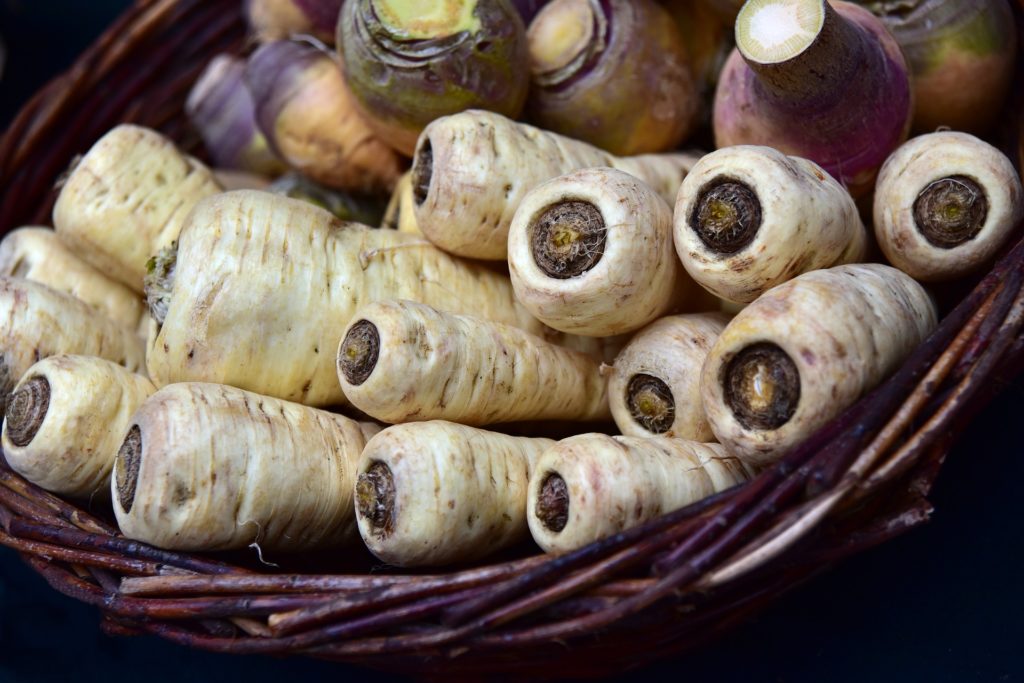
As November progresses, there are still crops that reap rewards in the garden. Knowing when to harvest late-season vegetables is crucial for maximizing the benefits of your hard work through the growing season.
Vegetables Ready for Harvest in November:
Root Vegetables: Carrots, beets, parsnips, and turnips can be harvested throughout the month and often taste sweeter after a frost.
Brassicas: Vegetables like broccoli, Brussels sprouts, and cabbages can still produce heads if conditions are right.
Late Season Herbs: Some herbs like parsley and cilantro can withstand chilly temperatures. Harvest them before the first heavy frost.
Winter Squash: Varieties like butternut and acorn squash should be harvested by mid-November to prevent frost damage.
Make sure to check local frost dates to ensure that you’re harvesting at the right times to avoid any loss.
10. Preparing Your Garden for a Restful Winter
As the month comes to a close and plants are harvested, it’s essential to prepare your vegetable garden for winter. An astutely prepared garden will not only make your work easier come spring but also help in maintaining soil health and preventing pest problems.
Preparation Steps for Winter:
Clean Up Debris: Remove any remaining dead plants, weeds, and debris which can harbor pests and diseases.
Mulching: Add a thick layer of mulch over remaining perennial vegetable beds to insulate the soil and suppress weed growth.
Soil Testing: November is a great time to perform a soil test to assess nutrient levels and pH, providing ample time to make amendments before spring planting.
Garden Tools Organization: Clean, sharpen, and store garden tools properly to ensure they are in good condition for the following season.
11. Building Wildlife Habitats for Biodiversity
While focusing on your vegetable garden in November, it’s also a good time to consider the wider ecological impact of your gardening efforts. Creating habitats for local wildlife can attract beneficial insects, birds, and pollinators, which play crucial roles in the health of your garden.
Ideas for Enhancing Garden Biodiversity:
Construct Birdhouses: Installing birdhouses can encourage natural pest control through birds that will feast on aphids and other common garden pests.
Incorporate Native Plants: Adding native flowers and shrubs can provide food and shelter for local wildlife and beneficial insects, creating a balanced ecosystem.
Create Brush Piles: Piles of dead branches or leaves can serve as winter homes for various wildlife, which can help control pest populations naturally and enrich soil when they decompose.
Water Features: If appropriate for your garden, consider installing a small water feature to attract birds and beneficial insects, enhancing the overall biodiversity.
A biodiverse garden contributes not only to healthier vegetable plants but also fosters a more enjoyable and vibrant gardening experience, making your November endeavors even more rewarding.
12. Embracing the Quiet
Gardening is a continuous journey of learning and adaptation. November is an excellent time to embrace the quieter aspects of gardening. While the garden may appear to slow down, it’s an opportunity for reflection, research, and planning.
Ideas for the Meditative Gardener:
Garden Journaling: Record your observations from the past season. Note what you want to improve, experiment with, or change in the coming months.
Research New Varieties: Spend time researching exciting vegetable varieties you’ve never tried and plan for their incorporation in your upcoming garden plans.
Community Engagement: Connect with local gardening groups or clubs, either in person or virtually. Sharing experiences and challenges enhances knowledge and can even inspire new gardening ideas.
Taking this time to plan for the growth of your gardening knowledge feeds not only your plants but also your passion.
13. Emphasizing Sustainable Practices
Sustainability should be at the forefront of any garden project, even in November. By adopting sustainable practices, you ensure that your garden will be productive for years to come.
Implementing Sustainable Practices:
Rainwater Harvesting: Set up a collecting system for rainwater to use for irrigation in the growing season. This practice conserves water and helps reduce your environmental footprint.
Organic Fertilizers: When preparing your soil for planting next season, consider organic fertilizers that nourish the soil without harmful chemicals.
Companion Planting: Plan for companion planting in next year’s garden layout, which promotes healthy plant growth and minimizes the need for pesticides.
Seed Saving: At the end of the season, gather seeds from your best-performing vegetables to plant next year. This not only saves money but helps propagate the most resilient varieties.
Your November vegetable garden ideas should include a focus on initiatives that minimize your environmental impact while strengthening your soil and crop resilience for years to come.
14. Leveraging Indoor Gardening
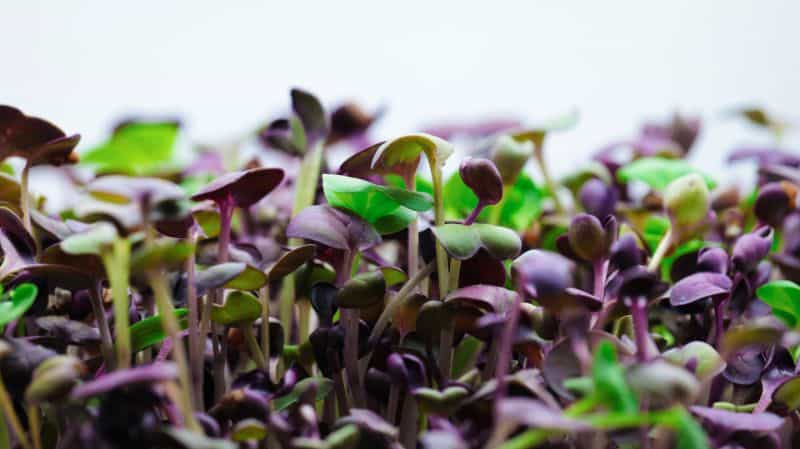
For those who can’t resist gardening even as the temperatures drop, you might consider bringing some gardening indoors. Indoor gardening can complement your outdoor efforts and provide fresh produce no matter the season.
Indoor Gardening Options:
Herb Gardens: Grow a variety of herbs like basil, parsley, and chives on a sunny windowsill. They require minimal space and can be clipped as needed for culinary uses.
Microgreens: Quick and simple to grow, microgreens can be cultivated in shallow trays using minimal resources, and they offer a nutritional punch in just a couple of weeks.
Container Vegetables: Consider growing dwarf varieties of vegetables such as cherry tomatoes, peppers, or lettuce in containers. This method can be a fun experiment and allows for gardening enjoyment throughout the winter.
By nurturing indoor plants in November, you keep your gardening passion alive and enjoy the benefits of fresh produce year-round.
15. Preparing for Seasonal Changes
As November draws to a close, it’s essential to prepare not just for the winter but for the eventual transition into spring. Be proactive in your garden preparations to ensure success for the upcoming seasons.
Steps to Transition:
Plan Ahead: Consider crop choices and garden designs in advance. By planning early, you can take advantage of early-season sales on seeds and supplies.
Creating a Crop Calendar: Develop a planting and harvesting calendar that outlines when to start seeds indoors, when last frost dates are expected, and the timeline for sowing seeds directly outdoors.
Tool Maintenance: Use the downtime in the garden to clean, sharpen, and organize all tools and equipment. Ensure everything is ready before launching into a busy planting season.
Soil Amendments: Before the ground freezes, consider adding soil amendments like compost, well-rotted manure, or leaf mold to improve soil health. These can be tilled into the soil before the spring planting to provide rich nutrients for your upcoming crops.
Final Thoughts:
Celebrate Your Harvest: Take the time to enjoy the fruits of your labor, whether it’s through sharing with friends and family or preserving your bounty for the winter months.
Stay Curious: Continue to learn about gardening techniques, new plant varieties, and sustainable practices. Gardening is an ongoing journey filled with opportunities for growth and exploration.
Connect with Nature: Remember to spend quiet moments in the garden, appreciating the beauty of nature as it shifts into a winter landscape. Observing the changes helps bring awareness and gratitude for the cycles of life.


